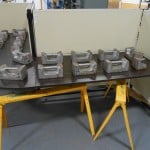BIFMA – Loss of Serviceability Guideline – New Release
BIFMA recently released a new revision of its loss of serviceability guidelines for interpretation on furniture testing. Most BIFMA test methods have an acceptance level for its functional loading and cyclic testing requiring “No Loss of Serviceability” to the unit. The loss of serviceability interpretation is known to be subjective to some extent. To help maintain test results consistency from lab to lab; BIFMA has been working on this guideline since 2012 and has released its first edition in 2014. This new 2016 guideline is more comprehensive and addresses topics such as product visual aspect and hazards resulting from testing. In addition, a detailed section clarifies how tested products should be loaded when subjected to loss of serviceability evaluation. Finally, it gives a list of examples of what might or might not be a loss of serviceability.

Disclaimer
All of the information and opinions contained in this blog are made with the information, and the understanding that we have reviewed at the time of publishing. However, despite our efforts, we do not offer any guarantee of their accuracy, thoroughness of our investigation or validity. The author of this blog is not liable for any inaccuracies or any losses or damages that may result from the use of the information or data contained herein. This blog has not been reviewed or verified for its accuracy by any peer group associates prior to publication.


